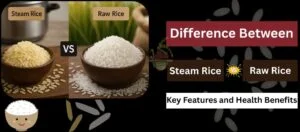Basmati rice is a long-grain aromatic rice variety known for its distinctive fragrance, delicate flavour, and unique cooking characteristics. Its history can be traced back several centuries in the Indian subcontinent, particularly in the regions of present-day India and Pakistan.
The term “Basmati” is derived from the Sanskrit words “Bas” meaning “aroma” and “Mati” meaning “full of” or “containing.” Basmati rice was traditionally grown in the fertile lands of the Indo-Gangetic plains, where the combination of specific soil conditions, climate, and water sources contributed to its unique characteristics.
The origins of Basmati rice can be traced to the Indian subcontinent, with references to aromatic rice varieties appearing in ancient Sanskrit literature. It is believed that Basmati rice has been cultivated for over 2,000 years. The traditional farming techniques and expertise in growing and processing Basmati rice were passed down through generations.
Over time, Basmati rice gained popularity and recognition for its exceptional quality and became a favoured choice among royalty and nobility. It was highly valued for its fragrance, taste, and texture, making it a staple in royal feasts and special occasions.
In the 19th century, with the advent of the British Raj in India, Basmati rice caught the attention of the British colonial rulers. They recognized its commercial potential and began exporting it to various parts of the world. Basmati rice started gaining popularity in Europe and the Middle East, where it was considered a luxury food item.
In the late 20th century, efforts were made to protect and promote the authenticity and geographical indication of Basmati rice. India and Pakistan, being the major producers of Basmati rice, worked on establishing legal frameworks to protect the Basmati rice name and ensure its quality standards.
In 1997, the Indian government obtained a Geographical Indication (GI) tag for Basmati rice, officially recognizing it as a product with specific geographic origin and qualities. The GI tag certifies that Basmati rice must be grown in specific regions and meet certain standards to be labelled as Basmati.
Today, Basmati rice is widely cultivated in the Indian states of Punjab, Haryana, Uttarakhand, Uttar Pradesh, and parts of Jammu and Kashmir, as well as in the Pakistani regions of Punjab and Sindh. It remains a highly sought-after rice variety in both domestic and international markets, known for its exceptional fragrance, elongation upon cooking, and delicate flavour that complements a variety of dishes, particularly Indian and Pakistani cuisines.
Related Posts
1718 Golden Sella Basmati Rice
1718 Golden Sella Basmati Rice is one of the most premium varieties of rice widely admired for its aromatic essence and its quality of preventing
June 19, 2025
No Comments

Blogs
Difference Between Steam Rice vs Raw Rice: Which is Good for Health
For centuries, rice has been the most important part of Indian meal. Whether it is a festival or a mundane day, rice delicacies like Biryani,
June 19, 2025
No Comments
1718 Sella Basmati Rice
1718 Sella Basmati Rice is a premium long-grain variety popular for its slender shape and distinct aroma. This rice undergoes a unique process of parboiling
June 17, 2025
No Comments

